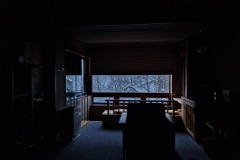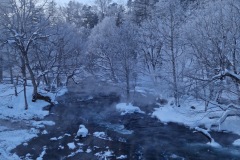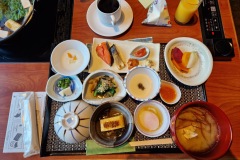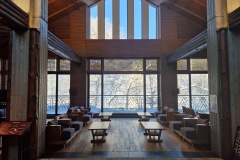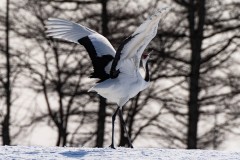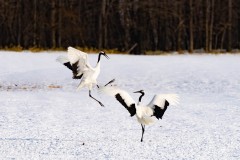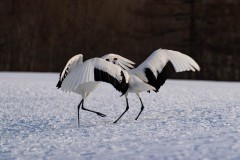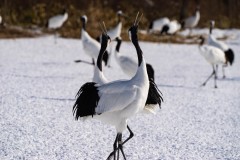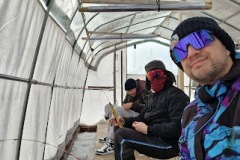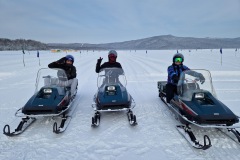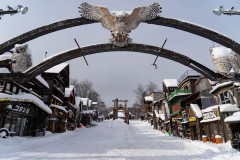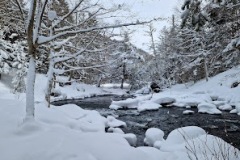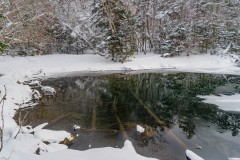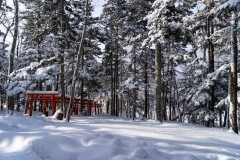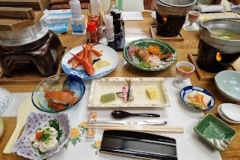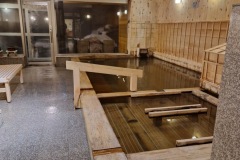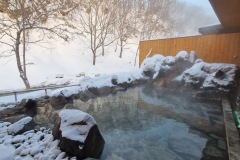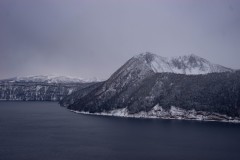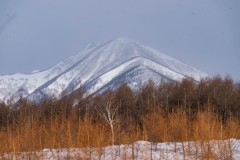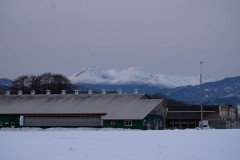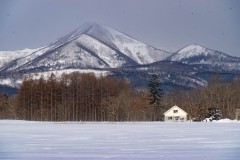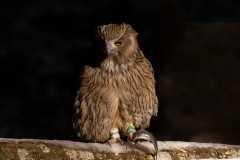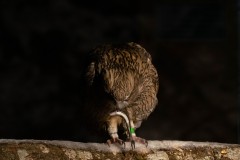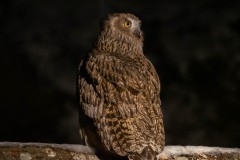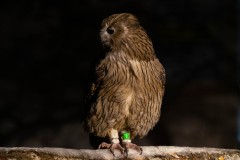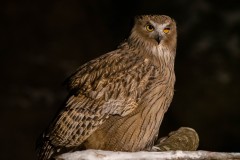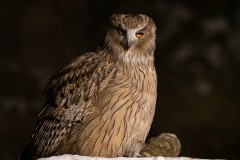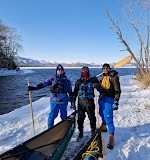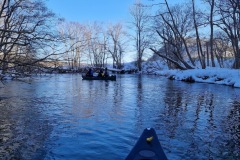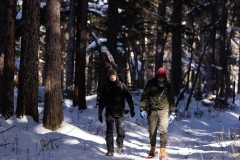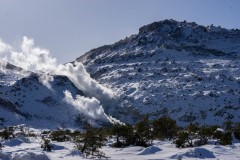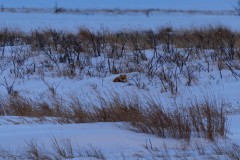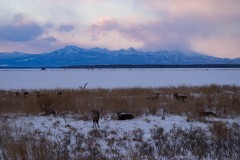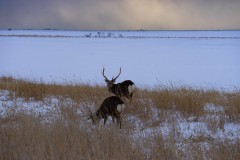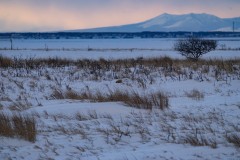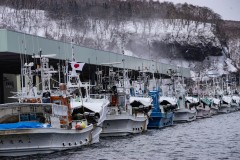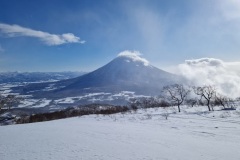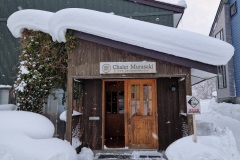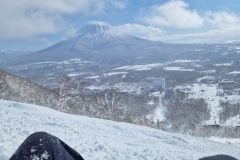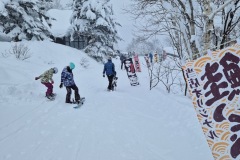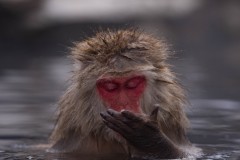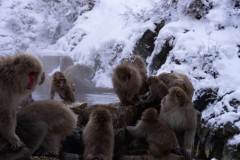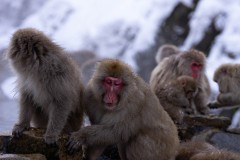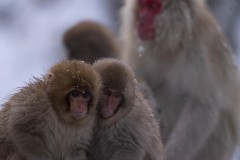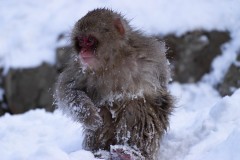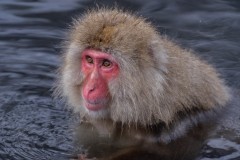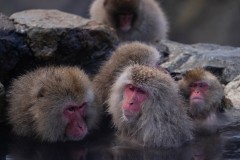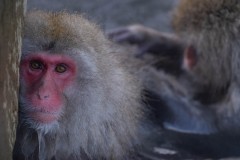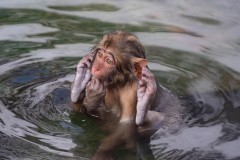East Hokkaido, Niseko and Nagano
For years we saw pictures of the amazing wildlife and panoramas that the island has to offer, the red cranes, the bears, the red foxes, the deers and the eagles are all iconic animals that can be observed and photographed there.
We landed in Tokyo (東京) and connected the next day to east Hokkaido, arriving in the small airport of Kushiro (釧路市), greeted by the pretty sight of the white peaks as we approached the Island. The Kushiro airport is small and only has a couple of flights everyday, the CTS airport near Sapporo (札幌市) has more international connecting flights, but our goal was to explore and discover the eastern part of the island so getting there directly was better.

Anyway, as the place is quite remote, forget about moving around using public transportation, either you chose the easy solution and you get a guide and a minivan that will drive you around, or you do it on your own like us and you just rent a car and organise your trip. Hokkaido in the winter is covered by snow, making some of the roads impractical, the weather conditions will also make it compulsory to drive slowly and carefully, you are not allowed to drive faster than 50 kph, take it into account when you are planning your days! To rent a car simply book one online at one of the renters at the airport, and drive off. For some of us, the process might be more difficult, some countries (France and Switzerland for instance) have to get an accredited translation of their driving license before renting one, the translation has to be done in Japan by the JAF (Japan automobile federation). This can be tricky, as you either do it on your arrival, losing time to go to a JAF office and get the translation, or you do it before going through one of the many intermediaries that will take care of it for you and send it to your home where you live, just take into consideration that it will take 3 to 4 weeks…. You have been warned, check if you need one. We got a 4wd impreza Subaru, did the job well.
Anyway, waiting for our last fellow arriving later in the evening, we got our car and went off to check out the crane sanctuary right next to the airport. Well, as those were one of our objectives we were quite excited to see some of them right from the get go. The crane sanctuary is a small place, a house where you buy the tickets, a small exhibition and a couple of enclosures with a few cranes there, good opportunity to get some close up shots, but frankly can be skipped if you plan like us to go to the Tsurui sanctuary later on. We got a few shots, trying to avoid the feeding infrastructure or the walls and then went off to do some shopping in a mall in Kushiro and pick up our friend from the airport. We took off and drove to our first place hotel : La vista Akangawa.
The hotel is a couple of hours north of Kushiro, south of lake Akan and in the middle of nowhere. It is a beautiful place, next to a river, with nice wood architecture and a traditional Onsen to dip into with an indoor and outdoor bath. The restaurant is quite good, but expensive, and will serve you with local delicacies, book in advance as we did not get the evening meal for lack of reservation and had to find a place in the nearby town instead. If you are still hungry after the dinner, the hotel is serving free ramen right next to the onsens until late in the evening. The rooms are harmonious and offer a calming view on the river that is passing by and the fresh snow falling. If you are lucky you might spot through the windows a couple of dears passing by or napping. The breakfast was also Japanese traditional, excellent.
The next day we took the car and went to see the Tsurui sanctuary where red collared cranes are migrating for the winter. The drive is scenic, through snowy panoramas, you will spot eventually a couple of deers here and there, those are everywhere! Arriving at the Tsurui sanctuary we parked and it was only a short walk to the observatory spot, basically a barrier giving a wide view on a prairie where dozens of cranes are coming the morning to get fed and chill out for the day. Offering a beautiful show as they dance in the snow. Called “Tancho” – 丹頂鶴 – those magnificent birds can be best observed from late November to mid-march
Professional and amateur photographs are gathering there, showing off their gear and cameras while shooting frenetically in the hope of getting the “money shot”. There is a small inn right next to the Tsurui meadows where a well known guide named Makoto offers toured guides, but he was booked out when we went to Hokkaido.
Anyway, we got ourselves a lunch in the nearby town, went back to the cranes for a while and left when the cranes started to take off and go somewhere else for the night. Other beautiful sightings of the cranes can be done near a bridge not far away, the bridge offers the particularity of seeing the cranes in the meadows and the mist covering the river.
We drove back to our Ryokan and went for a quick tour in the town on the shores of the lake akan to visit a bit. Then back to the hotel, straight into the hot waters of the Onsen and then to the restaurant.
In the morning we went back to the lake Akan town and visited the small area dedicated to the AINU, the indigenous people from the northern region of the Japanese archipelago, particularly Hokkaido. This was of limited interest. We tried our luck at fishing through ice holes on the lake, with absolutely no success whatsoever. After 30 minutes freezing around our holes in the ground we decided to call it a day and try something else. We did a snowmobile tour on the lake, the tour offers several different tracks, but the longer ones were closed due to the snow conditions on the frozen lakes so we did a small one and wandered back to the shore.
We were looking for a place to do some hiking around lake Akan, in particular snow shoe hiking. Unfortunately no shop was keen to rent us snow shoes or offer guiding services but the visitor center advised us to go check a hiking paths towards the mt. Oakan not far away.
On the way we stoped to visit a small shrine in the heights of the town and then drove for 10 minutes before parking the car on the side of the road and walking back to the entrance of the track, well hidden near a bridge. We were the only ones in the area with no marked track and only small red ribbons on trees to show us vaguely where to go. waist deep into the snow, opening the track was a particular experience. After 40 minutes battling it out we eventually made a break near a small partially frozen pond and made our way back to the car. The hike was quite special, being truly alone in the snowy nature. Fortunately we did not encounter any bears, those are probably in hibernation during this time of the year..
Now was the time to get to our second hotel in Hokkaido, we drove east, enjoying the mountain ranges, we had a nice bowl of ramen and then we made a small detour to the observatory point 3 on lake Mashu, the view on the lake was quite something and the grey weather made the colours really special. We then eventually reached the 湯宿だいいち Ryokan.
The ryokan was difficult to book as it is not available on any western booking website and has to be booked directly true an all Japanese website. The place is a remote authentic old school ryokan, also on the shores of a small river.
The river happens to be also the hunting ground for owls, offering a prime location to snap pictures of the bird. The Blakiston’s fish owl is the largest living species of owl in the world, the bird is classified as an endangered species and only 100-150 of those birds are left in Japan.
The ryokan itself is big, traditional without being luxurious and offers excellent onsen facilities with direct access to the river to cool down the body between 2 dips in hot waters, the restaurant is absolutely amazing with traditional and well presented local food and the staff is helpful. In the evening everybody gathers in the main room around a fireplace and waits for the owls to show up. We were fortunate enough to get 2 encounters with the owl: one at around 1 in the morning the first night when the owl came and waited for around 20 minutes in the trees, the second night the owl came and feasted on some fish right in front if the window, in a well lighted spot, offering prime opportunity for close up pictures. The owls can be primary observed here at our Ryokan, in the Shiretoko national park further north and at another river spot to the west.
The next day was activity day, we first went to the Kawayu Eco Museum Center to do a small snow shoe tour in the wilderness. The one hour loop offers cool views of the forest and occasionally also offers animal sightings, we were not that lucky. Nevertheless it was a nice and relaxing walk in nature, not sure it is 100% worth it though. On the road to get there you will pass small hills with geothermal activity generating impressing fumes. We ate a nice soba bowl at a local restaurant and then we booked a kayak tour on a river near the Kushiro lake with SOMOKUYA. We met our guides in the afternoon and then drove with them to the start of the river descent. The kayaking was fun, the sights were interesting but nothing out of the ordinary. The best would be probably to do this in the very early morning for the atmosphere and the mist on the river. After an hour of calm waters we got back to the shop and said our goodbyes and drove back to our beloved ryokan for another evening of Onsen and fish owl sighting.
The next day we had booked a tour on an ice boat in order to observe the Hokkaido eagles. During the winter time the birds are mostly chilling on the drifting ice and fishing there, thus arranging a boat to see them there is your best bet to see them. The tours are leaving super early from the coastal town of Rausu, unfortunately due to high winds our tour was cancelled. We decided to try to go to the Shiretoko national park instead and drove to Rausu. Unfortunately as indeed the winds were high and snow was falling heavily we could not reach the national park and had to stop in Rausu. We had lunch in a small bar operated by a mama-san that insisted for us to sing karaoke while feeding us with local delicacies.
We quickly visited the town and the harbour and then decided to head back due to the bad weather. Before leaving the coastal road to get back to our ryokan we decided to do a small detour by the Notsuke peninsula. The peninsula is very narrow and extends for around 20 km, the deers are settling there during the winter times to avoid snow, wind and pasture in peace, making them extremely easy to observe. At the end of the road, you can stop at the lighthouse and from the parking there we were fortunate enough to spot a red fox in the snow. The drive back with the sun set colors and the mountains in the background was truly something I will remember fondly.
The next day we took the car and drove to the Memanbetsu airport in the far north of the island to catch our flights as we were leaving eastern Hokkaido. On the way there we crossed the Bihoro pass above the Kushiro lake at sun rise offering a last nice glimpse at what nature has to offer.

Niseko
We then took the plane directly to CTS and from there we had booked in advance a shuttle to drive us to Niseko where we had planned a couple of days of snowboarding. Niseko is filled with foreigners, expensive and it is difficult to find a descent place for dinner without making a booking before. A friend of the family was kind enough to let us stay at his chalet right in front of the slopes and we spend the next two days exploring the domain and enjoying fresh powder in front of mt. Yotei. We enjoyed very much our dinner at a lamb bbq place called ニセコ山麓ジンギスカン NISEKO SANROKU JINGISUKAN in the evening, as it provided us with good meat and a cosy and relaxed atmosphere where you just want to jug a few beers while enjoying the smell of charred lamb. We enjoyed very much the less groomed areas of Niseko’s slopes, especially the higher part of the resort and the runs under the ski lifts. The ramen lon the slopes was just the cherry on the top.
Nagano
It was then time to join our sister in Nagano for a few days of riding in the Japanese alps. We took the plane to Haneda, the Shinkansen from Tokyo station to Nagano and then the bus to the Shigakogen prince hotel where we booked a room for a couple of days. The Shigakogen prince hotel is a nice mountain hotel, right next to the slopes, but it is also very expensive and the food is not that great (for the price). The slopes are alright but not that high and if you want to explore the full range of slopes you will pass your time going down for a few minutes and then taking the lifts again. We had a good time once again outside of the groomed areas but the domain felt small. While the sloped were not that amazing we had fun on our day tour to see the snow monkeys in the Snow Monkey Park (Jigokudani Yaen Koen). We took the first bus in the morning from the hotel and quickly hiked up our way to the entrance of the park. We were actually the very first persons to get in when it opened. We spent the morning there snapping pictures of the monkeys chilling the hot baths and scrambling around. We even ran into Paul Mckenzie a famous photographer we were following on instagram that inspired our trip to east Hokkaido!
Nice pictures safely stored in the camera we went back down, got ourselves a nice bowl of ramen and then got back to the prince hotel. The next day we went to Matsumoto for a quick tour of the castle and the ukiyo-e museum and then took the Shinkansen back to Tokyo where we spent our last 2 days walking around the city, checking out places that were burned in our memories from the time we were living there (20 years ago!) and reconnecting with old friends that still lived there.
Japan, once again, you were amazing, will be back soon.
